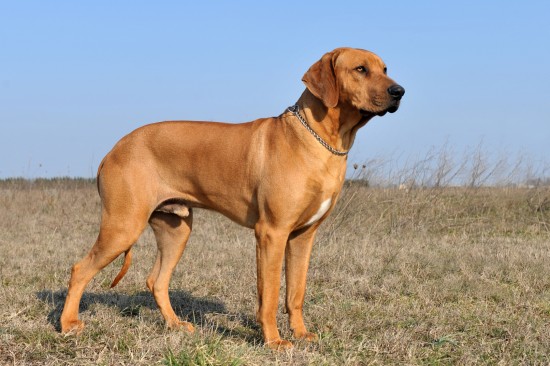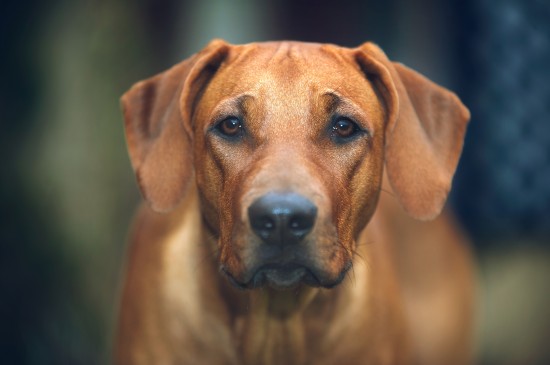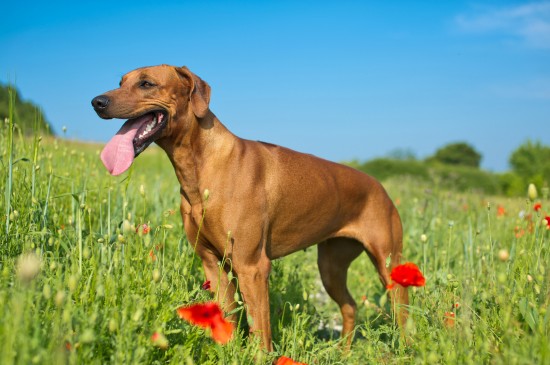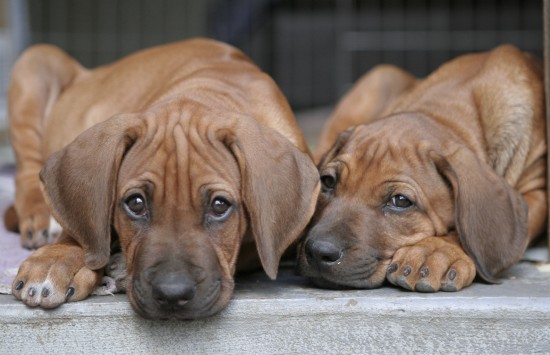




The Rhodesian ridgeback is a large and distinctive breed of dog that hails from Rhodesia, and was originally developed as both a hunting dog and to protect farms and estates from predators and intruders. They are bold, confident dogs that require an experienced handler to train and manage them, as they can also be prone to dominance.
The most distinctive feature of dogs of the breed is their signature ridge of hair that runs along the length of the spine in the opposite direction to the rest of the coat. It is thought that this unusual trait occurs due to the ancestry of the original African breed of dog that also possesses the ridge on the back. They have short, straight coats in a bright fox red colour, which is easy to care for and otherwise unremarkable other than the ridged area. Males of the breed can stand up to 27” tall at the withers, and weigh up to 39kg, with females being slightly smaller.
If you are considering buying a Rhodesian ridgeback as a pet, it is vital to do plenty research into the breed and its core traits first, and ensure that you are confident in your ability to manage a large, confident dog. It is also wise do to plenty of research into the breed’s health and average longevity too, and if any health testing is advised for dogs of the breed.
We will cover these factors in more detail in this article.
The average lifespan of the Rhodesian ridgeback is 10.25 years of age, which places them on the slightly low end of the spectrum when compared to other dogs of a similar size and build.
The ridge of the ridgeback itself is caused by an interesting combination of genetic traits, and more information on this can be found in a previous article. In terms of the genetic diversity of the breed as a whole, the coefficient of inbreeding statistic for the Rhodesian ridgeback is 5.9%, which indicates that the breed is not subjected to a high amount of inbreeding, and is within the acceptable range of 6.25% or lower that is the ideal for pedigree dog breeds.
The shape, build and core physical traits of the ridgeback may present a couple of potential problems for the dog, which all potential owners should be aware of. The ridge of the back, while a breed trait, is actually classed as a genetic abnormality, and is connected to a condition called dermoid sinus, an indentation of the skin along the spine, which can make dogs of the breed prone to infections and pain in this area.
The deep chest of the breed too puts them at risk of developing bloat or gastric torsion, a condition in which the stomach fills with a dangerous amount of gas, and may potentially flip over on itself.
The British Veterinary Association, The Kennel Club and various Rhodesian ridgeback breed clubs make certain recommendations for pre-breeding testing and breeding protocols, in order to improve the health of the breed as a whole. Current schemes and recommendations for the breed include:
As well as the conditions mentioned above that are monitored and may be tested for, the Rhodesian ridgeback is also known to be at potential risk of various other health conditions too. The most common of these include:
Copyright © 2005-2016 Pet Information All Rights Reserved
Contact us: www162date@outlook.com